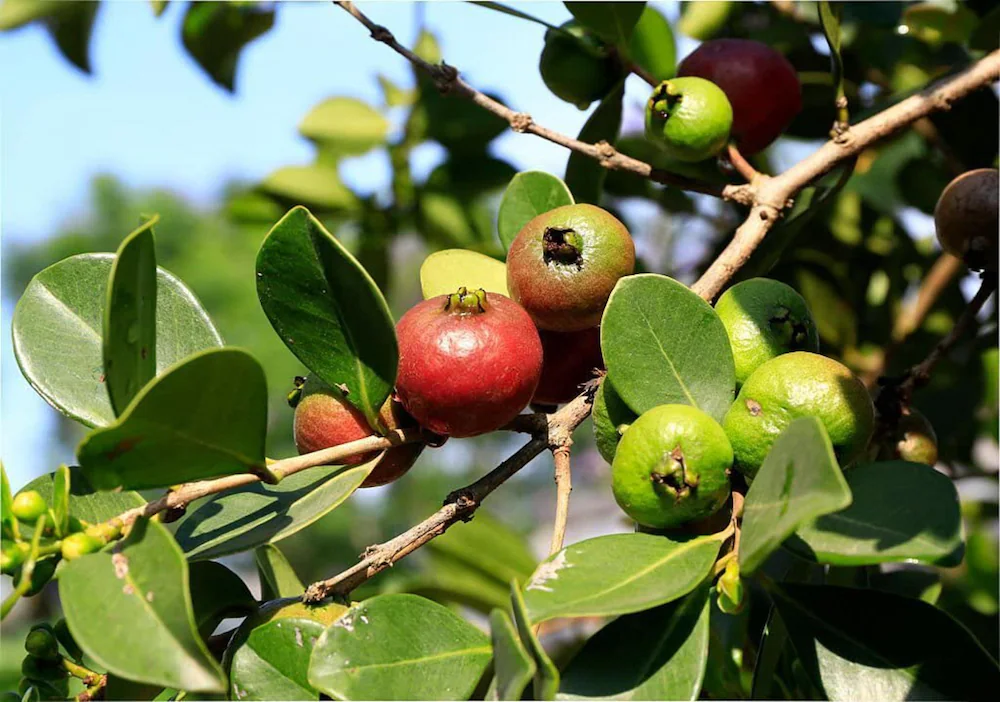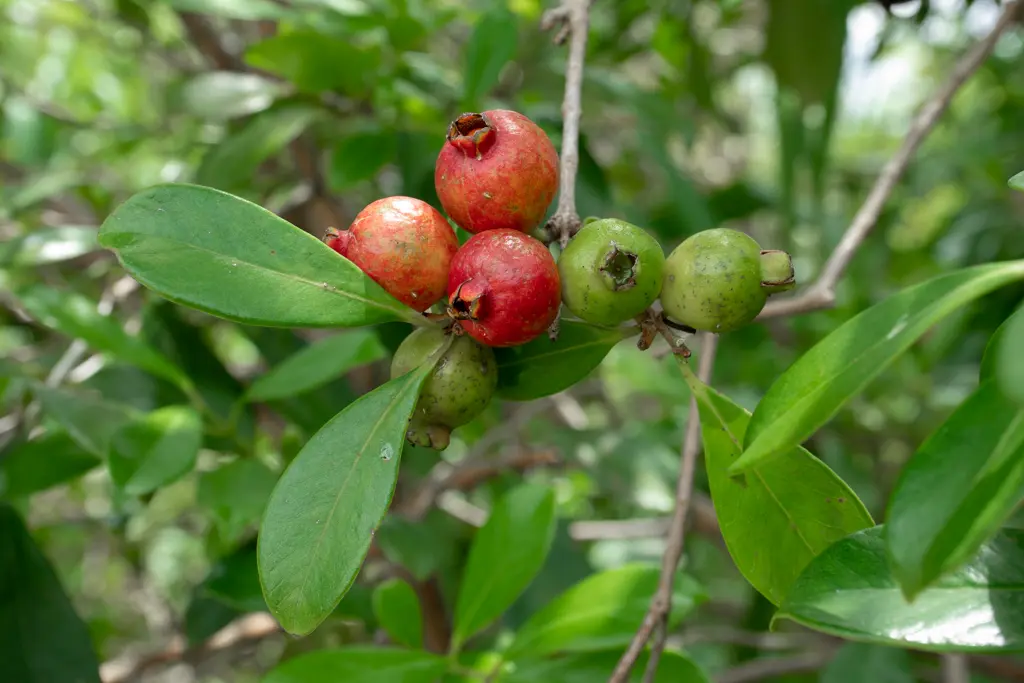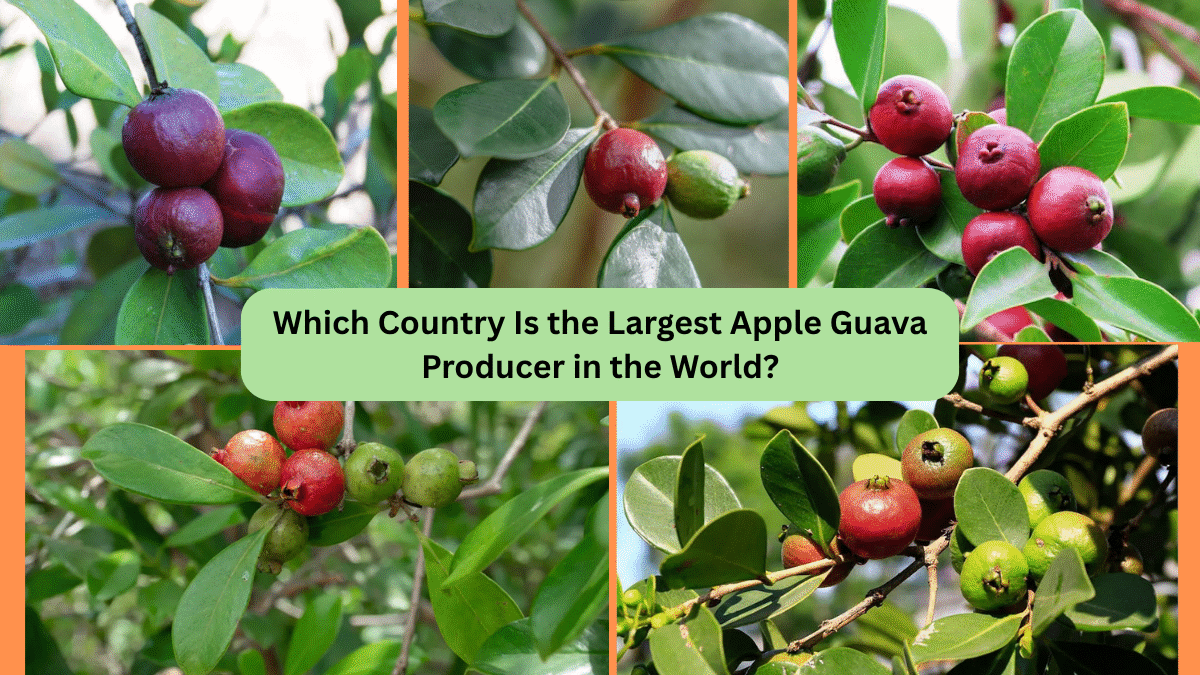The Apple Guava (Psidium guajava), commonly known simply as guava, is one of the most widely cultivated tropical fruits in the world. Renowned for its sweet, aromatic flavor, and versatility in culinary applications, the apple guava is a nutritional powerhouse loaded with vitamin C, dietary fiber, and antioxidants. As global demand for tropical fruits rises, one country has firmly established itself as the world’s leading producer of apple guava. This article explores which country produces the most apple guava, the factors behind its dominance, and the economic and cultural significance of this beloved fruit.
What is Apple Guava?

The Apple Guava belongs to the Myrtaceae family and is a small, evergreen tropical tree that bears round or pear-shaped fruits. Its skin can be green, yellow, or pinkish when ripe, and the flesh ranges from white to deep pink or red, studded with tiny edible seeds.
Scientific Name: Psidium guajava
Common Names: Guava, Apple Guava, Tropical Guava
Origin: Native to Central America, Mexico, and northern South America
Historical and Cultural Importance
Guava has been cultivated for centuries, valued for its rich flavor, medicinal properties, and culinary versatility. It spread from the Americas to Asia, Africa, and the Pacific Islands through early trade routes.
- In India: Guava is referred to as the “poor man’s apple” and is widely consumed fresh, in juices, jams, and chutneys.
- In the Caribbean and Latin America: Used in traditional sweets, jellies, and beverages.
- In Southeast Asia: Eaten with salt and chili, or turned into desserts.
The Largest Apple Guava Producer in the World: India

India is the largest producer of Apple Guava globally.
Why India Leads Apple Guava Production
1. Ideal Climate and Soil Conditions:
Guava thrives in India’s tropical and subtropical climates with well-drained soils. Major producing states like Uttar Pradesh, Bihar, Maharashtra, Tamil Nadu, and Andhra Pradesh offer optimal growing conditions.
2. Extensive Cultivation Area:
India has dedicated vast agricultural land to guava cultivation, with over 250,000 hectares under guava orchards.
3. Rich Varietal Diversity:
India is home to several popular guava varieties including:
- Allahabad Safeda: Known for its white flesh and sweetness.
- Lalit: Sweet, pink-fleshed guava.
- Sardar (Lucknow 49): Crisp, juicy, and suitable for processing.
- Arka Mridula: High-yielding and disease-resistant.
4. Year-Round Harvest:
Thanks to varying climates, guava is harvested almost year-round in different parts of India, ensuring a steady supply.
5. Strong Domestic and Export Demand:
Guava is a staple fruit in Indian diets and is increasingly popular in Middle Eastern, Southeast Asian, and European markets.
Production Statistics
- India produces over 17 million metric tons of guava annually.
- Uttar Pradesh alone accounts for 30-35% of the country’s total guava output.
- India contributes to over 40% of global apple guava production.
Other Apple Guava Producing Countries

While India dominates the market, several other countries contribute significantly to global apple guava production:
- China: Significant production, mostly for domestic consumption.
- Indonesia: Popular in traditional markets and used in juices.
- Philippines: Cultivates guava for local consumption and medicinal use.
- Brazil: A key Latin American producer, especially for guava paste and jellies.
- Thailand and Mexico: Notable guava-growing nations with specialty cultivars.
Nutritional and Health Benefits
Apple guava is celebrated for its dense nutritional profile:
- Rich in Vitamin C: Contains four times more vitamin C than oranges.
- High in Dietary Fiber: Supports digestion and gut health.
- Antioxidants: Helps combat oxidative stress and inflammation.
- Potassium and Folate: Beneficial for heart health and prenatal nutrition.
Health Benefits:
- Enhances immune function.
- Supports weight management.
- Regulates blood sugar levels.
- Promotes healthy skin and eyesight.
- Traditionally used in treating diarrhea, dysentery, and colds.
Common Uses

- Fresh Consumption: Peeled or unpeeled, often sprinkled with salt and chili powder.
- Juices and Smoothies: Popular refreshing beverage.
- Jams, Jellies, and Pastes: Essential in sweets and desserts.
- Chutneys and Pickles: A traditional Indian culinary staple.
- Medicinal Applications: Leaves and unripe fruit used in traditional remedies.
Economic Importance in India
The guava industry is a vital segment of India’s horticulture sector:
- Employment Generation: Supports millions of farmers, laborers, and vendors.
- Agro-Processing Industry: Boosts income through value-added products like guava pulp, candies, and beverages.
- Agri-Tourism: Guava orchards attract tourists for farm visits and harvest experiences.
- Export Revenue: Growing demand in Middle East, Southeast Asia, and European markets.
Challenges in Apple Guava Production

- Pests and Diseases: Susceptible to fruit flies, wilt, and anthracnose.
- Post-Harvest Losses: High perishability leads to significant spoilage.
- Market Volatility: Prices fluctuate due to overproduction in peak seasons.
- Infrastructure Gaps: Limited cold storage and transport facilities in rural areas.
Research and Innovations
India is investing in guava production enhancement through:
- High-Yield and Disease-Resistant Varieties: Development of new hybrids.
- Organic Farming Practices: Promoting chemical-free guava cultivation.
- Post-Harvest Technology: Improved packaging, storage, and processing units.
- Export Promotion Initiatives: Enhancing product standards and market access.
Sustainability and Environmental Benefits
- Drought Tolerance: Requires less water than many tropical fruits.
- Agroforestry Integration: Compatible with mixed cropping systems.
- Soil Enrichment: Guava trees improve soil organic content.
- Low Chemical Input: Can be grown with minimal pesticides and fertilizers.
Future Growth Prospects
- Rising Demand for Tropical and Functional Fruits: Health trends favor guava’s nutrient profile.
- Processed Guava Products: Expansion of pulp, jams, juices, and snacks in domestic and export markets.
- Urban Farming and Rooftop Gardens: Guava’s adaptability makes it popular in urban horticulture.
- Agri-Tourism Potential: Farm-stay experiences and orchard tours.
Conclusion
India remains the world’s largest producer of apple guava, a position bolstered by its favorable climate, extensive cultivation, rich varietal diversity, and cultural integration. The fruit plays a critical role in India’s agriculture economy, public health, and culinary traditions.
With growing international demand for exotic, nutrient-rich fruits, India’s leadership in guava production is poised for further growth. Continued investment in research, sustainable farming, and value-added product innovation will ensure that the humble apple guava continues to thrive both locally and globally.





Leave A Comment